
The silver-studded blue is a butterfly in the family Lycaenidae. This eye-catching butterfly has bright blue wings rimmed in black with white edges and silver spots on its hindwings, lending it the name of the silver-studded blue. P. argus can be found across Europe and Asia, but is most often studied in the United Kingdom in which the species has experienced a severe decline in population due to habitat loss and fragmentation.

The holly blue is a butterfly that belongs to the lycaenids or blues family and is native to Eurasia and North America.

Curetis bulis, the bright sunbeam, is a species of butterfly belonging to the lycaenid family. It is found in Asia.
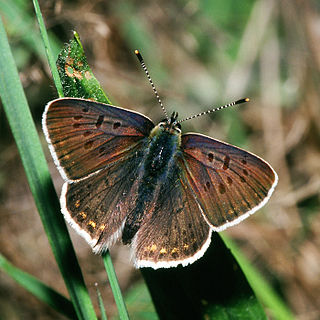
Lycaena tityrus, the sooty copper, is a butterfly of the family Lycaenidae. It is found in Europe.

Polyommatus amandus, the Amanda's blue, is a butterfly of the family Lycaenidae. It is found in the Palearctic realm.

Polyommatus damon, the Damon blue, is a butterfly of the family Lycaenidae.

Polyommatus daphnis, the Meleager's blue, is a butterfly of the family Lycaenidae.
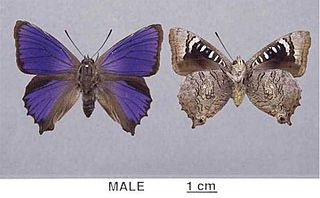
Ogyris is an Australasian genus of butterflies in the family Lycaenidae.
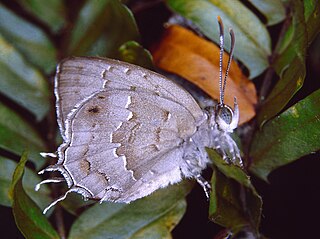
Surendra vivarna, the acacia blue, is a species of lycaenid or hairstreak butterfly found in Sri Lanka, India and the Indonesian islands as far as Sulawesi.

Ogyris zosine, the northern purple azure, is a member of the family Lycaenidae.
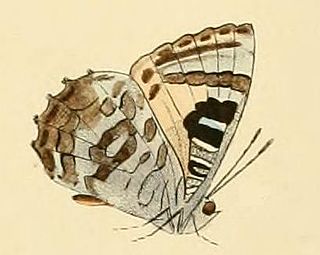
Ogyris oroetes, the silky azure, is a butterfly in the family Lycaenidae. It is found in most of mainland Australia.
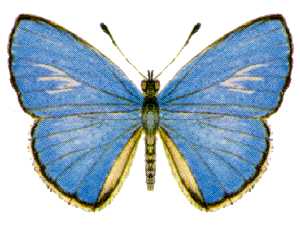
Candalides helenita, the shining pencil-blue, is a species of butterfly of the family Lycaenidae. It is found in Australia and Indonesia.
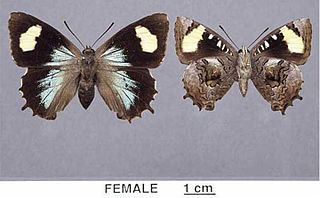
Ogyris genoveva, the genoveva azure or southern purple azure, is a butterfly of the family Lycaenidae. It is found in Australia.

Hypolycaena danis, the black and white tit or orchid flash, is a butterfly of the family Lycaenidae. It is found in the Maluku Province in Indonesia as well as the New Guinea region and north-eastern Australia.

Nacaduba biocellata, the double-spotted line blue, is a butterfly of the family Lycaenidae. It is found in Australia, Singapore, the New Hebrides, Sumba and Bali.

Ogyris amaryllis, the amaryllis azure or satin azure, is a butterfly in the family Lycaenidae. It is found in Australia.

Ogyris abrota, the dark purple azure, is a butterfly in the family Lycaenidae. It is found in Australia, from southern Queensland to south-eastern Australia.

Ogyris idmo, the large brown azure, is a butterfly in the family Lycaenidae. It is found in Australia, where it is found in Victoria, South Australia and southern Western Australia.

Ogyris olane, the Olane azure, is a butterfly in the family Lycaenidae. It is found in Australia, where it is found in most of the eastern half, including Queensland, New South Wales, Victoria and South Australia.

Callophrys xami, commonly referred to as the xami hairstreak or green hairstreak, is a butterfly included in the subgenus Xamia and the genus Callophrys in the family Lycaenidae. It was described by Tryon Reakirt in 1867. Other common names for this species, depending on the region, include green hairstreak and elfin. C. xami is considered to be a very rare species of butterfly, and its typical range is in southern Arizona and Texas including down south to Guatemala. The juniper hairstreak and the silver-banded hairstreak butterflies are similar species, but both differ significantly from C. xami in regards to the postmedian white line running across the butterfly wings.




















